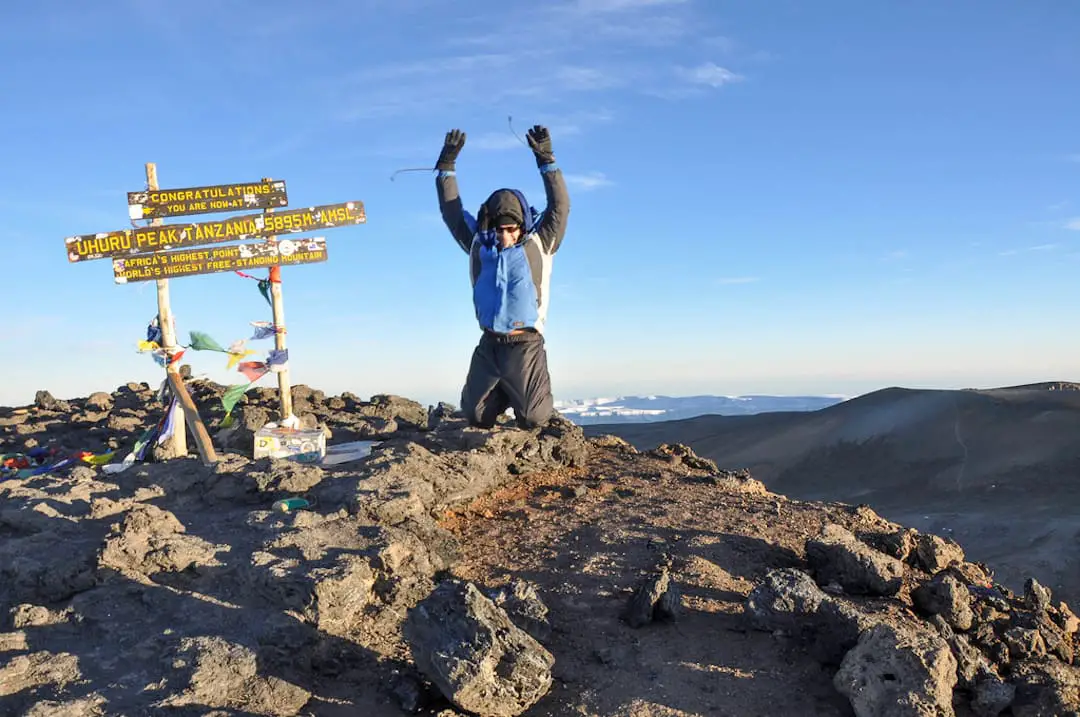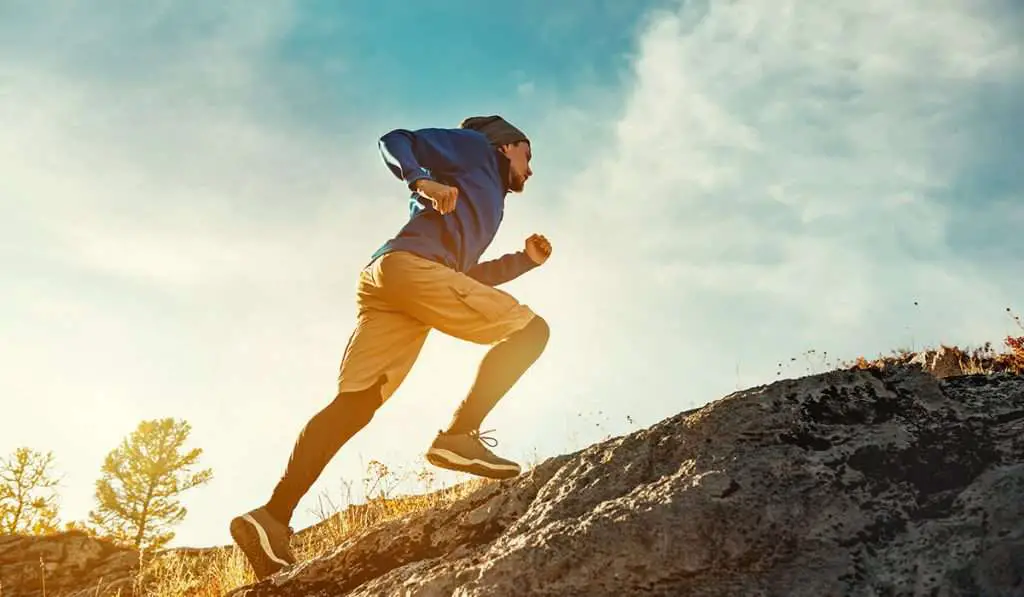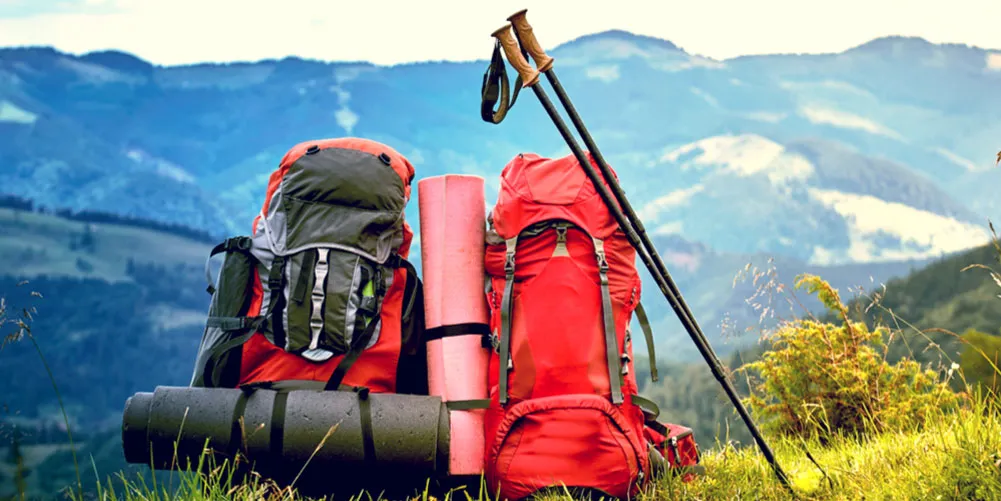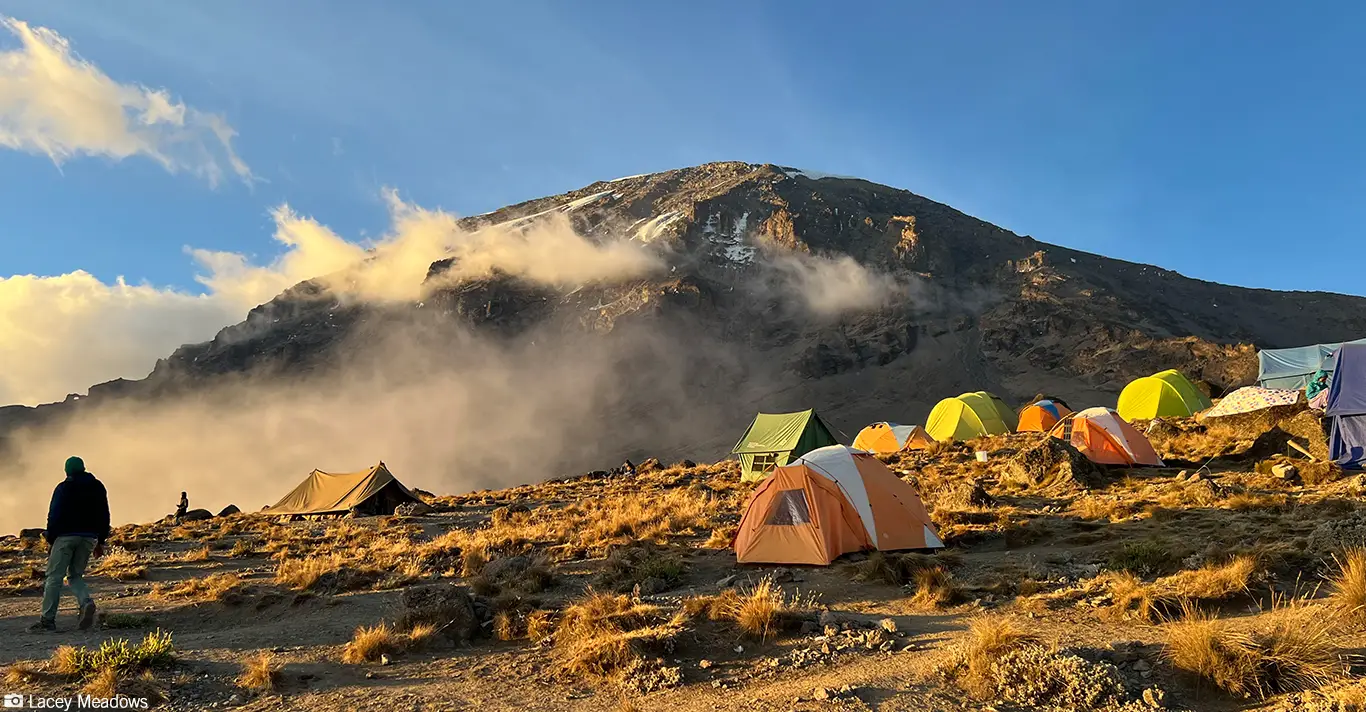So, you’re dreaming of standing on the summit of Africa’s highest peak? Good call. Mount Kilimanjaro isn’t just a bucket list item—it’s an adventure of a lifetime. But reaching 5,895 meters (19,341 feet) isn’t just about strapping on a backpack and hoping for the best. It takes preparation, commitment, and a solid understanding of what you’re signing up for.
As someone who’s guided dozens of treks up Kili, I’m here to walk you through everything you need to know: how to train, how to stay safe, what to pack, and the burning questions most climbers ask.
Table of Contents
Why Kilimanjaro Demands Respect
Kilimanjaro is a non-technical climb, meaning you don’t need ropes or mountaineering gear. But don’t let that fool you. Altitude is the great equalizer. People from all walks of life have summited—and some have turned back—because of how their bodies react to the thin air. The key is preparing your body and mind for the challenge ahead.

Training for Kilimanjaro
Start 3–6 Months Before Your Trek
Don’t wait until the last minute. Training should begin 3 to 6 months ahead of your scheduled climb.
Focus Areas:
- Cardiovascular endurance: Hiking, trail running, swimming, or cycling 3-5 times per week.
- Leg strength: Squats, lunges, and step-ups with added weight simulate carrying your pack.
- Core stability: Planks and balance work help with posture and stability over uneven terrain.
- Long hikes: Do at least one long hike (5+ hours) every week or two. Carry a daypack to simulate trekking conditions.
Simulate Altitude (If Possible)
If you live near high elevation, train there. If not, consider sleeping in an altitude tent or visiting higher terrain occasionally to help your body adapt.
Mental Preparation
Altitude fatigue, cold mornings, and summit night discomfort are real. Building grit is as important as building muscle. Push yourself beyond your comfort zone during training.
Read the full guide Train to Climb Kilimanjaro for Beginners A full Success Guide

Understanding Altitude and Acclimatization
What Is AMS (Acute Mountain Sickness)?
AMS is your body’s response to reduced oxygen at high elevations. Symptoms include headaches, nausea, dizziness, and trouble sleeping. Severe forms like HAPE or HACE can be life-threatening.
How to Acclimatize Properly
- Choose a route that offers gradual ascent (more on this below)
- "Climb high, sleep low" where possible
- Stay well hydrated
- Don’t rush the pace; pole pole (slowly slowly) is the mantra
Medications
Talk to your doctor about Diamox (acetazolamide), which can help prevent altitude sickness. Always test it before the trip to ensure no adverse reactions.
Best Routes for Success
Some routes are better for acclimatization than others. Here are the top picks:
Lemosho Route
- Duration: 7–8 days
- Success Rate: ~90%
- Why: Long, scenic, and excellent for acclimatization
Machame Route
- Duration: 6–7 days
- Success Rate: ~85%
- Why: Popular for its varied landscapes and good acclimatization profile
Rongai Route
- Duration: 6–7 days
- Success Rate: ~80%
- Why: Less crowded and starts from the northern side, drier conditions
Avoid routes shorter than 6 days. The more time you spend on the mountain, the better your chance of summiting.
What to Pack for Kilimanjaro
Clothing Layers
- Base layer: Moisture-wicking (avoid cotton)
- Mid-layer: Insulating fleece or down
- Outer layer: Waterproof and windproof jacket/pants
- Gloves and hat: Critical for summit night
Footwear
- Hiking boots: Broken-in and waterproof
- Camp shoes: Lightweight for evenings
Gear Checklist
- Headlamp with extra batteries
- Daypack (30-35L) with hydration system
- Trekking poles
- Sleeping bag rated to -10°C (14°F)
- Sunscreen, lip balm, sunglasses
- Personal first-aid kit

Summit Night and What to Expect
The final push starts around midnight. It’s dark, cold, and slow going. You’ll ascend by headlamp light, one foot in front of the other, battling fatigue and thin air.
Tips:
- Eat a light snack beforehand
- Layer up but don’t overdress
- Keep a steady pace and use short, deep breaths
- Trust your guide’s pace—they’ve done this before
The sunrise at Stella Point is magical, and pushing to Uhuru Peak is emotional and unforgettable.
Most Common Kilimanjaro FAQs
1. Do I Need a Guide?
Yes, Kilimanjaro National Park regulations require you to climb with a licensed guide and support crew. It’s also the safest way to trek.
2. How Much Does It Cost?
Expect to pay between $2,000 and $4,000 for a quality, all-inclusive package. Beware of low-budget options—they often cut corners on safety, gear, or guide experience.
3. When Is the Best Time to Climb?
- Best months: January to mid-March and June to October
- These periods offer the clearest skies and safest trails.
4. Do I Need Travel Insurance?
Yes. Make sure it covers high-altitude trekking and emergency evacuation. Some policies exclude this by default, so read the fine print.
5. Can Beginners Climb Kilimanjaro?
Absolutely. Many first-time trekkers have reached the summit with proper preparation and support. Fitness and mental resilience matter more than mountaineering experience.
6. What If I Can’t Make It to the Top?
It happens. Your safety always comes first. A good operator will monitor your health daily and make decisions accordingly. Turning back isn’t failure—it’s wisdom.
7. Is There Cell Signal on the Mountain?
Some camps have patchy reception, but don’t count on it. Consider it a digital detox.
8. What Are the Toilets Like?
Public toilets exist, but they’re often basic. Most quality operators provide private portable toilets for added comfort.
9. What Should I Eat During the Trek?
Operators provide meals tailored for high energy: porridge, eggs, pasta, soups, and fruits. Bring snacks like energy bars and nuts.
10. How Do I Stay Clean?
There are no showers, but you’ll get warm water for sponge baths. Wet wipes and hand sanitizer go a long way.
Final Thoughts from a Kilimanjaro Guide
Climbing Kilimanjaro is a test of willpower, preparation, and respect for nature. It’s not easy, but it is achievable. Every step you take brings you closer to something far greater than a photo on a summit sign. It’s a journey that humbles, challenges, and rewards like no other.
Train well. Listen to your body. Choose a reputable guide service. And above all, climb with purpose and joy.
See you on the Roof of Africa.
Climb Kilimanjaro Guide FAQs
Is Climbing Kilimanjaro Difficult?
Kilimanjaro is not a technical mountain you won’t need ropes, crampons, or ice axes. However, don’t let that fool you. It’s still a challenging trek, primarily due to the high altitude. Most climbers face exhaustion, altitude sickness, and freezing temperatures, especially on summit night. The terrain varies from lush rainforest to alpine desert and icy glaciers. The real challenge is your stamina, mindset, and how well you adapt to reduced oxygen levels. That’s why proper preparation — both physical and mental is key.
Who Should Not Climb Kilimanjaro?
You should avoid attempting Kilimanjaro if you have serious medical conditions such as uncontrolled high blood pressure, heart disease, or severe asthma. Pregnant women are also advised against high-altitude trekking. Always consult with your doctor before committing. A full medical check-up could save your life.
Do You Need to Be Fit to Climb Kilimanjaro?
Absolutely; but you don’t need to be an Olympic athlete. If you can hike uphill for several hours with a backpack, you’re already halfway there. Your training should include: Cardiovascular exercise (e.g., jogging, swimming, cycling), Strength training (especially legs and core), Practice hikes with elevation gain, Carrying a daypack (around 6–8kg) on long walks. Start training 2–3 months in advance. A prepared body adapts better to altitude.
Do You Need a Guide to Climb Kilimanjaro?
Yes. It’s illegal to climb Kilimanjaro without a licensed Tanzanian guide. Tour operators provide a full team: guides, cooks, and porters. These professionals are your lifeline on the mountain. They monitor your health, set the pace, carry your gear, and make the entire climb manageable.
Do You Need Oxygen on Kilimanjaro?
Not usually. Bottled oxygen is only used in emergencies. The real solution is proper acclimatization and a slow, steady pace. Most reputable operators follow the pole pole (slowly, slowly) principle. It's not a race the slower you ascend, the better your body adjusts.
What Is the Summit Success Rate?
Roughly 60% to 70% of climbers reach the summit, depending on the route and itinerary. Success hinges on these factors: Acclimatization time (longer routes = higher success), Physical preparation, Quality of your support team, Mental resilience
What’s the Best Route for Climbing Kilimanjaro?
There are several routes, each with pros and cons: 1. Marangu Route: Easiest and cheapest but lower success rate. 2. Machame Route: Most popular, scenic, and challenging. 3. Lemosho Route: Excellent acclimatization and stunning scenery. 4. Rongai Route: Drier and less crowded. 5. Northern Circuit: Longest and most successful. For beginners, the Lemosho and Northern Circuit routes offer the best chance of summit success.
What Age Is Best for Climbing Kilimanjaro?
The legal minimum is 10 years. The ideal age range is 18–60, but age alone doesn’t define success. We’ve guided climbers in their 70s and even 80s to the top. Your fitness, attitude, and preparation matter more.
Can Solo Travelers Climb Kilimanjaro?
Yes. You can either join a group climb (more affordable and social) or arrange a private trek. Many solo adventurers choose Kilimanjaro to meet like-minded travelers. Group treks foster camaraderie and support, especially on tough days.
Is Kilimanjaro Overcrowded?
Popular routes like Machame and Marangu can get busy, especially in peak season (January–March and June–October). Opt for quieter routes like Rongai or Northern Circuit if you crave solitude. Book in advance during busy months.
Are There Showers or Toilets on the Mountain?
Showers? No. Toilets? Sort of. Camps have basic long-drop toilets. Some tour operators offer private toilet tents. For washing, most trekkers rely on baby wipes or a bowl of warm water provided by the crew. Hygiene is crucial — carry hand sanitizer and toilet paper.
Can You Get Married on Kilimanjaro?
Yes! Some couples have said I do at base camps or even at the summit. It requires permits, planning, and an adventurous spirit. But what could be more unforgettable?
Can You Drink Alcohol on Kilimanjaro?
Technically yes, but we strongly advise against it. Alcohol dehydrates you and increases your risk of altitude sickness. Save the celebration for after you’re back in Moshi or Arusha.
What Is the Death Zone and Is Kilimanjaro in It?
The death zone refers to altitudes above 8,000 meters (26,000 feet) where the human body cannot acclimatize. Kilimanjaro’s summit is 5,895 meters (19,341 feet) — high, but not in the death zone. However, altitude sickness is still a real danger.
What Are the Common Dangers on Kilimanjaro?
1. Altitude Sickness (AMS, HAPE, HACE) 2. Hypothermia 3. Dehydration 4. Sunburn (UV rays are stronger at altitude) Choosing a reputable operator and taking a longer route significantly reduces risk.
What Is the Total Cost of Climbing Kilimanjaro?
Expect to pay between $1,500 and $4,000 depending on the route, company, and inclusions. The price covers: Park fees, Food and water, Tents and camping equipment, Guides and porters, Emergency equipment, Transfers, Beware of rock-bottom prices they often cut corners on safety and staff welfare.
How Much Cash Should You Bring?
Budget around $200–$300 USD for tipping your mountain crew. Tips are essential and highly appreciated. Bring some extra cash for snacks, gear rental, or souvenirs.
How Many Hours Do You Trek Each Day?
On average, 4–7 hours per day. Summit night is the big one — a 10–14 hour push starting at midnight. It’s a mental and physical test like no other, but the reward is worth every step.
What Happens to Your Body at High Altitude?
Your body produces more red blood cells to carry oxygen. However, the side effects may include: Headaches, Nausea, Fatigue, Insomnia, Loss of appetite. Acclimatization days and hydration help mitigate these symptoms.
What’s the Hardest Part of the Climb?
Summit night. You’ll start in darkness, bundled in layers, facing wind, cold, and thin air. Every step feels like a marathon. But when the sun rises over the crater rim, illuminating the Roof of Africa, the sense of achievement is indescribable.
Do You Need to Train for Kilimanjaro?
Yes. While beginners can and do reach the summit, they prepare for it. Training reduces your risk of failure and injury. Focus on cardio, strength, and altitude hikes if possible. Hike with a backpack to mimic mountain conditions.
What Are the Best Packing Tips?
Use a reliable duffel bag (porters carry this) Bring a 30L–40L daypack, Layer your clothing, Waterproof everything, Break in your boots, Don’t forget lip balm, sunscreen, and energy snacks


